Everything in the environment interacts with each other. Just as you interact with your peers on a daily basis, microbes and bacteria interact with other microbes all the time.
And just like in your life, these interactions can be good or bad for both parties. Also, bacteria can either help or fight each other.
Interestingly, bacteria developed very efficient killer weapons to go to war with other microbes.
Here, we will talk about one of these weapons – the so-called contact-dependent growth inhibition system. Or as researchers also call it:
What is contact-dependent growth inhibition?
The name of this weapon is more of a concept than a physical machine. So, let’s start by breaking this phrase apart.
Contact-dependent growth inhibition: “contact-dependent” means that a bacterium needs to be close to and in physical contact with the other bacterium for this system to work. “Growth inhibition” means that the bacterium with this system restricts the growth and reproduction of other bacteria. In other words, it kills these bacteria.
So contact-dependent growth inhibition is basically a weapon to kill other bacteria. And interestingly, researchers managed to take a snapshot of this weapon. It indeed looks like a stick on the outside of the bacterial membrane.
Imagine, how tiny a bacterium is. And on the outside of this tiny bacterium sits an even tinier killer weapon!
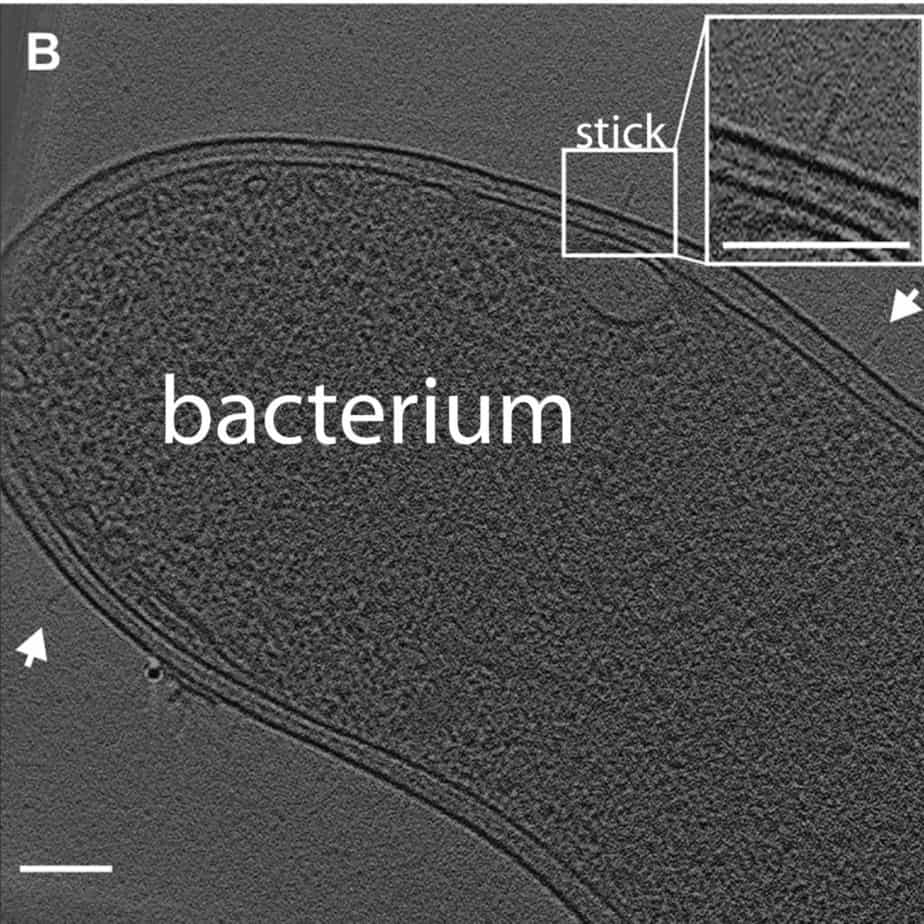
Okay, now that we understand what this contact-dependent growth inhibition system is, let’s look at how it actually works. How can a little stick be so dangerous to other bacteria?
How does the contact-dependent growth inhibition weapon work?
To answer these questions, we need to first understand what this stick weapon is built of.
In the picture below you have two bacteria and one stick weapon. The bacterium at the bottom is the attacker with the stick poking out of the membrane. The bacterium above is the prey that will get killed.

And in that picture, you can see that the stick weapon consists of three parts: the proteins A and B and an immunity protein.
Protein B (brown) can make holes in membranes.
Protein A is huge and has many different parts with different functions (hence the different colours in the figure). At the very end of protein A is a toxin (red) that can break the prey cell apart.
This is why the attacker bacterium needs to have an immunity protein (grey). This protein binds to the toxin and keeps it from breaking the attacker cell apart.
What are the different steps of killing?
So, our attacker lives in a nice environment minding its own business. And just in case, another bacterium becomes annoying, our attacker produces this stick and have it poking out of the cell. However, the main part of protein A sits and waits inside the attacker.
When another bacterium comes into contact with our attacker, the green part of protein A binds to this prey. This activates the stick and protein B helps protein A pass through the hole to the outside.
Now, the yellow part of protein A inserts itself into the membrane of the prey bacterium. This allows the last bit of A to travel through the prey’s membrane and cut itself loose from A.
Next, the orange bit of A binds to a specific transporter in the inner membrane of the prey so that it imports the toxic domain (red). It is unlikely that the prey bacterium has the matching immunity protein (grey) for this attacker’s toxin. Hence, the imported toxin domain can damage the bacterium and even kill it.
Why did bacteria evolve these cool contact-dependent growth inhibition weapons?
As you can understand, the contact-dependent growth inhibition weapon is a very complex mechanism and not every step is completely understood yet. That’s why researchers keep investigating this system so that we might be able to use it to our own advantage.
One theory is, that bacteria use this system to distinguish between siblings and non-siblings. Only a sibling bacterium would have the right immunity for an attacker’s stick weapon and thus survive an attack.
Other bacteria with different toxins and immunities would be killed. These bacteria likely belong to a different family and should thus be excluded from the community.
This would help bacteria connect only with family members and form exclusive networks for only like-minded (or -powered) bacteria. Even though these are only theories, it seems that also bacteria are very picky when it comes to choosing their friends and family. As we said in the beginning, social interactions can be helpful or harmful.

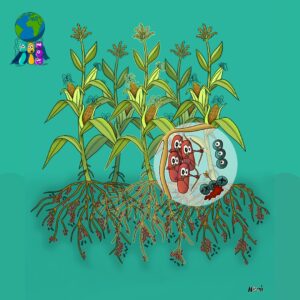
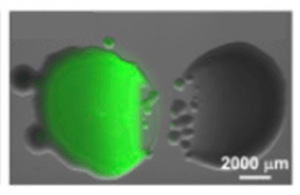
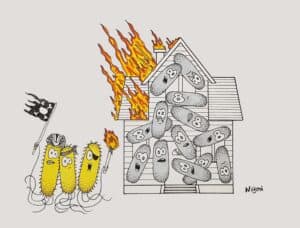
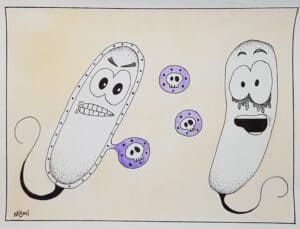
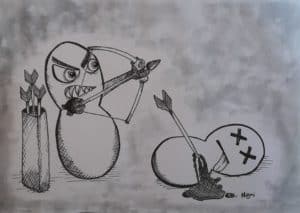
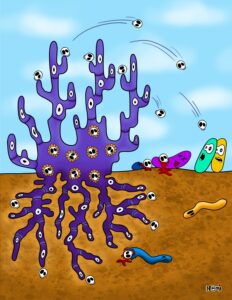
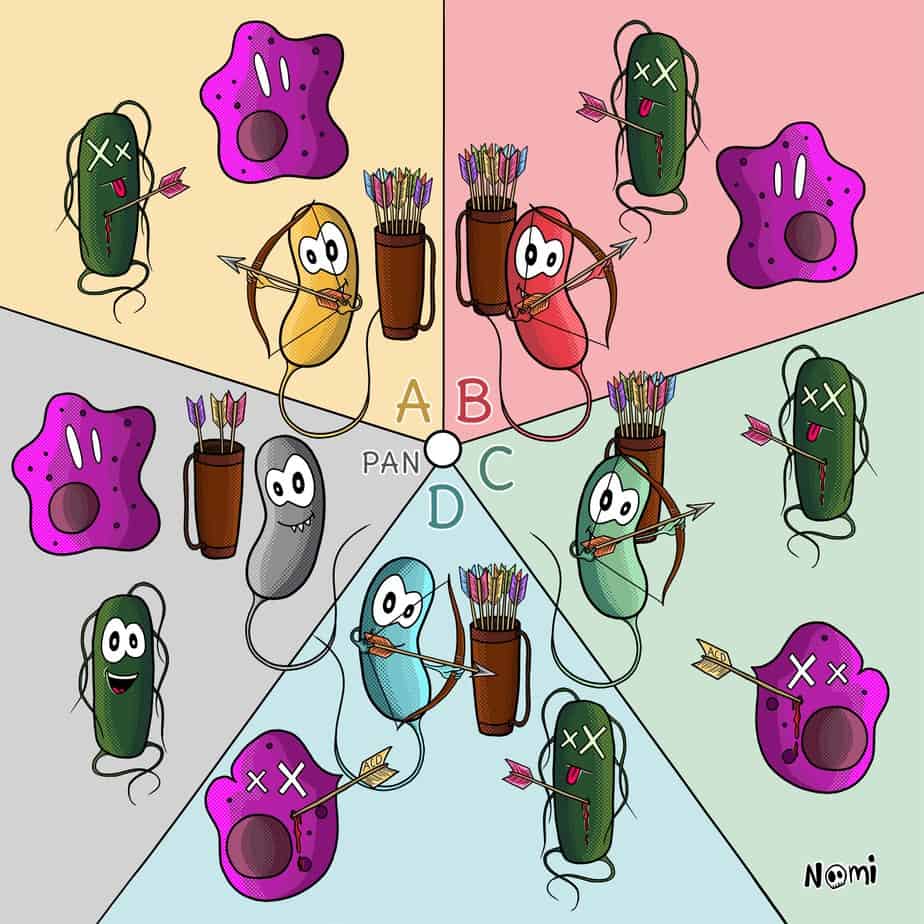
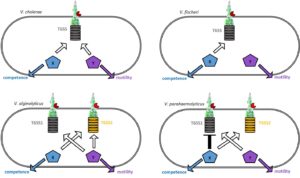

4 Responses
Awesome post! Great and clear explanation … but I have one question. Do the bacteria have a “choice” (ie. need specific conditions/proteins to be present) about whether they use their stick of death or is it an automatic, instinct-type response to being in contact with another bacterium?
Hey, thanks for response. That’s a great question and I’m not too sure that has been found out yet. But I guess it is rather an instinct as in there is another bacterium, let’s kill it…